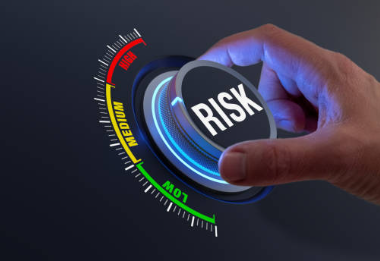What are the biggest educational problem in the world, and why they should be outlined
Education is often hailed as the cornerstone of progress and development in any society. It equips individuals with the knowledge and skills necessary to navigate the complexities of the modern world. However, despite its paramount importance, the global educational landscape faces a multitude of challenges that demand our attention. In this article, we will delve into the biggest educational problems in the world and explore why it is crucial to outline and address these issues.
Access to Education
Disparities in Access
One of the most glaring educational problems is the glaring disparity in access to education worldwide. Many children, particularly in low-income countries, do not have access to quality education. This issue disproportionately affects marginalized communities, exacerbating social inequalities.
Barriers Faced
Barriers such as poverty, gender discrimination, and geographic isolation hinder millions of children from attending school. Lack of access to education perpetuates cycles of poverty and limits opportunities for personal and societal growth.
Quality of Education
Disparities in Standards
Not only is access a concern, but the quality of education also varies significantly across the globe. Disparities in educational standards mean that some students receive a subpar education that hinders their future prospects.
Impact on Future Prospects
Inadequate education limits individuals’ ability to secure employment, participate in civic life, and contribute to economic development. This has long-term consequences for both individuals and societies.
Teacher Shortages
Worldwide Shortage
A widespread shortage of qualified teachers is a pressing educational problem. Many regions struggle to attract and retain talented educators, leading to overcrowded classrooms and reduced learning outcomes.
Effects on Students
Insufficient access to quality educators directly affects student learning experiences. It is imperative to address teacher shortages to provide students with the best possible education.
Educational Infrastructure
Inadequate Facilities
Inadequate educational infrastructure, including dilapidated school buildings and a lack of necessary resources, hinders effective learning. Students deserve an environment conducive to their development.
Hindrance to Learning
Without proper infrastructure, the learning process is hindered, making it difficult for students to reach their full potential. Investing in educational facilities is an investment in the future.
Gender Disparities
Unequal Educational Opportunities
Gender disparities persist in many parts of the world, with girls often having fewer educational opportunities than boys. This perpetuates gender inequalities and limits societal progress.
Consequences
Failing to address these disparities not only affects the lives of girls but also hampers overall societal development. Gender equality in education is essential for social and economic advancement.
Language Barriers
Language as a Barrier
Language barriers can be significant obstacles to education, particularly in multicultural societies. Many students struggle to learn in languages that are not their mother tongue.
Need for Multilingual Solutions
Efforts must be made to develop multilingual education systems that cater to diverse linguistic backgrounds. This ensures that no child is left behind due to language barriers.
Technology Divide
Role of Technology
Technology has the potential to revolutionize education, but there is a stark digital divide. Not all students have access to the necessary technology and internet connectivity for online learning.
Consequences
The pandemic highlighted this divide, and it is imperative to bridge it to ensure equitable access to educational resources and opportunities.
Curriculum Relevance
Outdated Curriculum
Many education systems still rely on outdated curricula that do not adequately prepare students for the modern world. This can hinder their ability to adapt to rapidly changing job markets.
Preparing Students
Education should be geared towards equipping students with relevant skills, critical thinking abilities, and adaptability to thrive in the 21st century.
Standardized Testing
Overemphasis
The overemphasis on standardized testing can stifle creativity and critical thinking in students. It narrows the focus of education to test preparation rather than holistic development.
Alternatives and Benefits
Exploring alternative assessment methods can lead to more comprehensive evaluations of student abilities and reduce the stress associated with high-stakes testing.
Lack of Career Guidance
Limited Guidance
Many students lack access to adequate career guidance, leading to uncertainty and uninformed career choices. This can result in a mismatch between skills and job opportunities.
Impact on Choices
Providing comprehensive career guidance can empower students to make informed decisions about their futures and align their education with their career goals.
Student Mental Health
Increasing Stress
The educational system’s pressures can take a toll on students’ mental health. Stress, anxiety, and depression are increasingly common among students.
The Need for Holistic Support
Educational institutions should prioritize mental health support to ensure that students can thrive academically and emotionally.
Funding Challenges
Budget Constraints
Education often suffers from budget constraints, limiting investments in quality teaching, resources, and infrastructure.
Investing in the Future
Investing in education is investing in the future of a society. Adequate funding is essential to overcome the various challenges in education.
Global Collaboration
Importance of Cooperation
Addressing these global educational problems requires international cooperation. Sharing best practices and resources can accelerate progress.
In conclusion, the biggest educational problems in the world encompass access disparities, varying quality, teacher shortages, inadequate infrastructure, gender inequalities, language barriers, technology divides, curriculum relevance, standardized testing, lack of career guidance, student mental health, funding challenges, and the need for global collaboration. These issues are not isolated but interconnected and have far-reaching consequences. Outlining and addressing these problems is not only a moral imperative but also essential for societal progress. It is through a concerted effort by governments, educators, and communities that we can create a more equitable and promising future for all.






